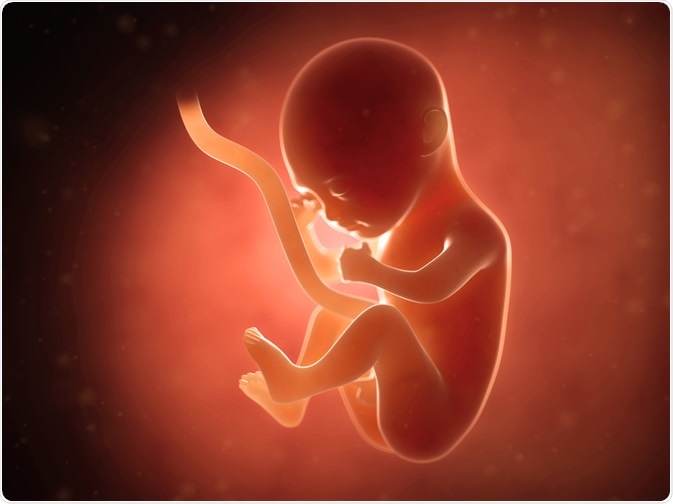During the last week of the third trimester, which is approximately 28 weeks into the pregnancy, the vocal cords of the fetus begin to develop.

Image Credit: SciePro / Shutterstock.com
The fetal development of the vocal cord
The respiratory system in humans is formed from an out-folding of the primitive gut in the fetus. This evagination appears in the first month, from the ventral side of the esophagus towards the cephalic end.
The fetal gut is pinched off completely by the growth of the tracheoesophageal folds on each side to meet in the center as the tracheoesophageal septum, except at the most cephalic tip, where it opens on the floor of the gut at the point where the pharynx meets the esophagus. This end forms the larynx, which is formed from a U-shaped mound facing caudally, situated around the opening into the esophagus. The two side walls are elevated to form the arytenoid ridges, while a pair of secondary elevations form the cuneiform ridges.
The arytenoid ridges grow larger and closer until the laryngeal opening is almost walled off, except at the end which is most cephalic. This produces a T-shaped laryngeal aditus.
Simultaneously, the furcula starts to develop a transverse fold at this cephalic end which is known as the hyobranchial fold that eventually becomes the epiglottis. This hyobranchial fold joins the arytenoid ridges to form the aryepiglottic ridges.
In the fourth month of pregnancy, a depression develops linearly in each arytenoid ridge on the medial side. This depression continues to deepen until there are two folds on each side enclosing the laryngeal opening.
The folds on the cephalic side form the external or false vocal cords, while the internal folds become the true vocal cords. At this point, which is about the tenth week of fetal development, the laryngeal opening is re-formed to connect the pharynx with the trachea.
References
Further Reading
Last Updated: Mar 31, 2023